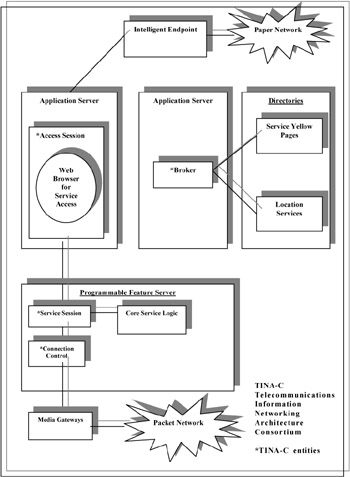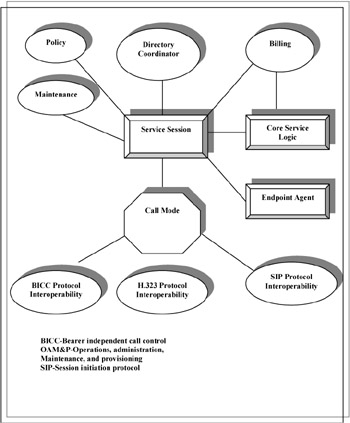Conclusions
|
| < Day Day Up > |
|
The rapid evolution of the TI has resulted in efficient convergence of voice and data transmission using a variety of technologies and media. This convergence has made the TI networks more cost effective and at the same time more complex to operate. To address the convergence complexity issues, the SD&D of this major Fortune 500 telecommunications company has developed the CM that is based on phased-domain technology and management solution. The CM model converges voice and data over a myriad of heterogeneous environments, diverse architectures, multiple vendors and domains (Keenly, 2001).
The CM Internet-domain management system is designated to effectively integrate multifaceted users, and interdependent and heterogeneous systems by employing multiple DMSs. The CM reduces the existing complex systems into their most manageable, simple and integrated forms and provides flexibility, extendibility, inexpensive and state-of-the-art services to its users. The CM architecture is designed to provide flow-through provisioning of cross-domain, and end-to-end system design, full-service hierarchy-layered applications, inter-domain fault analysis and reduction, across the board standardized components and logical and physical access to converged voice and data transmission (Asatani etal., 2001; Temme & Beroggi, 2000; Van Vleit, 2000).
The model improves the three major aspects of the network complexity issues: service introduction, equipment maintenance and upgrade, and system management and control. The model effectively reduces network complexity by a set of principles such as simplification, separating, distributing, configurating, updating, interfacing, and integrating. The model also uses three case-by-case procedures to reduce network complexities: service procedure, portioning, and upgrading. In addition the model employs nine inter-domain technologies to make a network more effective to its users: single-point entry, end-to-end design, expeditious attention, service management, single access point, capacity threshold, demand tracking, root cause fault analysis, and standard and open interfaces (Garg & Ness-Cohn, 1998; Georgopoulos, 1999; Hunter, 2001). Figure 3 is a presentation of the model's service architecture and its technologies.

Figure 3: Model's service architecture
The model's architecture provides its users a competitive edge through five inter-domain management applications: Inter-Domain Fault Manager (ID-FM), Inter-Domain Capacity Manager (ID-CM), Inter-Domain Tree Manager (ID-TM), Inter-Domain Provisioning Manager (ID-PM), and Inter-Domain Presentation Manager (ID-PMR). In conclusion, the CM model not only effectively converges voice and data transport over a myriad of diverse architectures and technologies, it also provides its users with a competitive edge during the three life-cycle phases of a network: design and development, testing, and maintenance (Sherif, 2001). Figure 4 shows the model's service component architecture.

Figure 4: Components of the service architecture
|
| < Day Day Up > |
|
EAN: 2147483647
Pages: 174